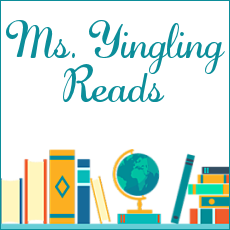 Blumenthal, Karen. Bootleg: Murder, Moonshine, and the Lawless Years of Prohibition.
Blumenthal, Karen. Bootleg: Murder, Moonshine, and the Lawless Years of Prohibition.Starting with the Valentine's Day Massacre in 1929, this overview of the history of alcohol consumption in the U.S. continues with a brief chapter about Morris Sheppard, who was instrumental in putting through the 18th ammendment, and then takes a brief skip back through why alcohol was so widely used in the earliest years of our country, why it became a problem, and why people thought it necessary for the country to be dry. It then discusses how the 18th ammendment affected people on both sides; I thought the interview with a man whose father ran a speakeasy was especially interesting in light of the preponderance of information we usually get from the side of federal agents. Much information on Al Capone is included, and a brief afterward about the long lasting effects of the "noble experiment" end the book.
Strengths: Karen Blumnethal always does a very thorough job; adored her Let Me Play and actually understood the stock market crash of 1929 for a brief moment while reading her Six Days in October. I purchased this because of the role that my town had in the Anti-Saloon League, and expect it to be popular when we do our nonfiction unit.
Weaknesses: This is not as easy to browse as some books, and dense at points. Reading a chapter a day would make it more palatable for students, since the information is very good.

Marrin, Albert. Flesh and Blood So Cheap: The Triangle Fire and Its Legacy.
Since I have several fiction books on the Triangle Fire, this is a good book to have. This book gives a nice explanation of why immigration changed in the U.S., and why there were so many Italian and Russian Jewish immigrants with little education who ended up in New York City and worked in the garment industry. It also describes conditions in the factories and the homes; the diagram of the "dumbbell" tenement buildings was extremely helpful to me in understanding all the books I read that talked about the rooms in which people lived. The devastating fire is covered fully, with quotes from eyewitnesses, and the labor reforms that were started because of the tragedy are explained as well.
Strengths: This is well laid out, with plenty of pictures, newspaper articles, etc., and the text is not quite as dense, which is helpful. I had not heard of Marrin, but will definitely look at some of his titles, including the Black Gold which comes out in January.
Weaknesses: This is picky, but I wish the orientation of the book had been taller and not as wide! I was very pleased with such a good book on a topic which fascinates me.































These are very interesting topics! I love it soooooo much that you highlight non-fiction. I know I've said that many times already, but it's just so great! :-)
ReplyDeleteI've read fiction about the Triangle Fire but never nonfiction. Thanks so much for the great reviews!
ReplyDeleteThe Triangle Shirtwaist Fire is such an interesting backdrop for fiction, would be great to have the non-fiction background from this book!
ReplyDelete